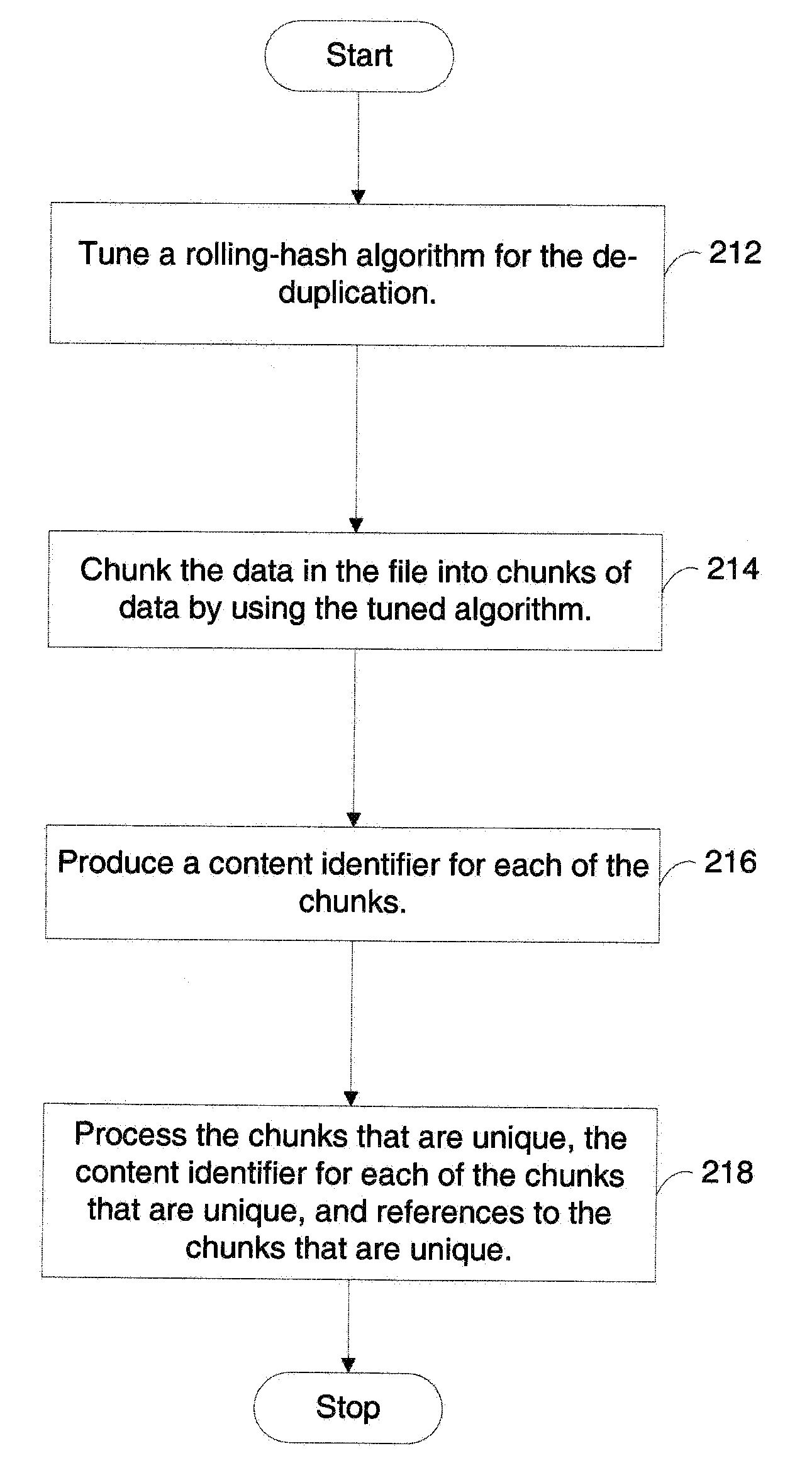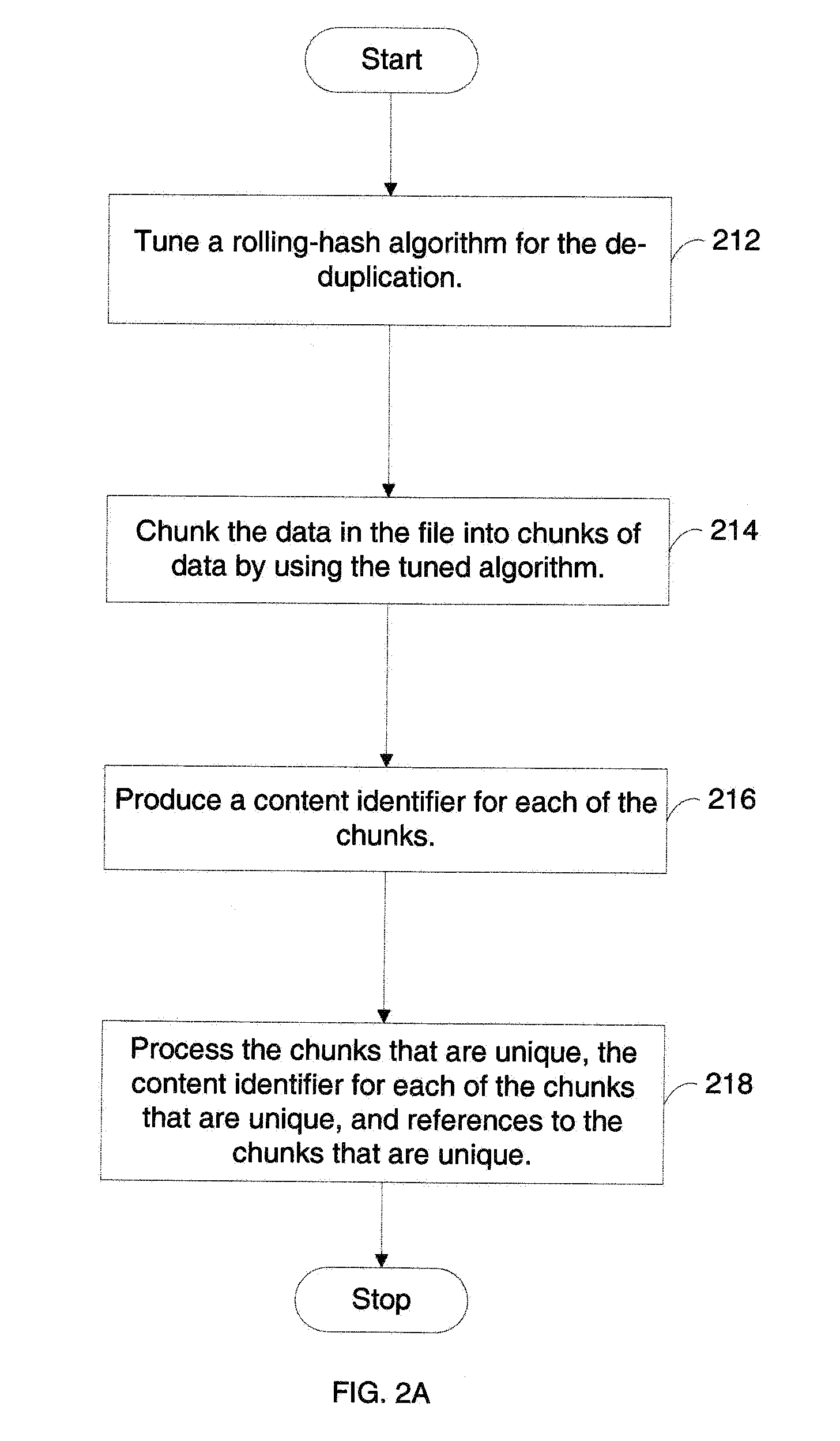Performing de-duplication for at least one computer file in a computer system
a computer system and computer system technology, applied in the field of performing de-duplication for at least one computer file in a computer system, can solve the problems of slow object “reconstruction” from the “blueprint” and poor candidates for data de-duplication, and achieve the effect of increasing the chunk size and decreasing the chunk siz
- Summary
- Abstract
- Description
- Claims
- Application Information
AI Technical Summary
Benefits of technology
Problems solved by technology
Method used
Image
Examples
Embodiment Construction
[0039]The present invention provides a method and system of performing de-duplication for at least one computer file in a computer system. In an exemplary embodiment, the method and system include (1) tuning a rolling-hash algorithm for the de-duplication, (2) chunking the data in the file into chunks of data by using the tuned algorithm, (3) producing a content identifier for each of the chunks, and (4) processing the chunks that are unique, the content identifier for each of the chunks that are unique, and references to the chunks that are unique. In an exemplary embodiment, the computer system includes a de-duplication-enabled data store. In an exemplary embodiment, the computer system includes (a) a transferor computer system that is configured to transfer the file to a de-duplication-enabled computer system and (b) the de-duplication-enabled computer system.
[0040]Referring to FIG. 2A, in an exemplary embodiment, the present invention includes a step 212 of tuning a rolling-hash...
PUM
 Login to View More
Login to View More Abstract
Description
Claims
Application Information
 Login to View More
Login to View More - R&D
- Intellectual Property
- Life Sciences
- Materials
- Tech Scout
- Unparalleled Data Quality
- Higher Quality Content
- 60% Fewer Hallucinations
Browse by: Latest US Patents, China's latest patents, Technical Efficacy Thesaurus, Application Domain, Technology Topic, Popular Technical Reports.
© 2025 PatSnap. All rights reserved.Legal|Privacy policy|Modern Slavery Act Transparency Statement|Sitemap|About US| Contact US: help@patsnap.com



